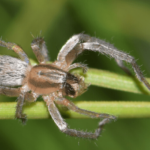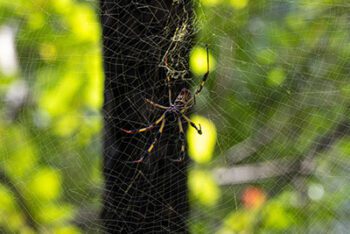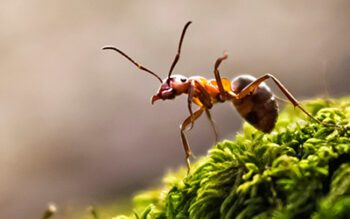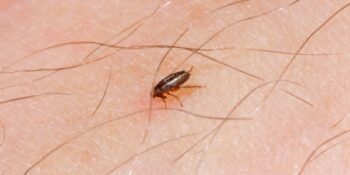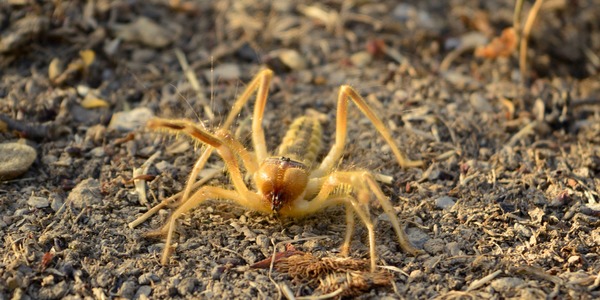
For Long Island homeowners, finding an unexpected cockroach or spider in your house can be frightening. Throughout the entire diverse planet, though, there are millions of species of insects that are far more terrifying. Here are five of the scariest insects around the world.
Assassin Bug
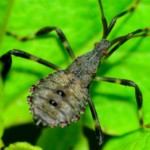
With more than 150 species in the family Reduviidae, Assassin bugs are true bugs that grow as large as 1.5 inches and are found here in North America. Many species are dark-colored shades of brown or black, but there are some brightly colored species in the mix, too.
Assassin bugs are not only predators that feed on other insects and spiders but are also large predators of crop pests in gardens and fields, so they’re an insect that benefits gardeners. In gardens, assassin bugs will sit and wait on their prey, including small, flying insects and caterpillars, then capture them by quickly stabbing them with their long mouthparts. Once their prey is immobilized, its bodily fluids are drawn through the assassin bug’s straw-like mouthparts.
Bullet Ant
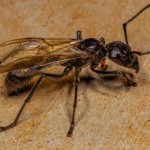
The bullet ant, also called the 24-hour ant (referring to the full day of pain it causes), is the cause of one of the most painful insect bites in the world. When you’re stung by one of these creatures, it might feel like your foot has been broken and then set on fire. Bullet ants are usually around an inch long, with stout, reddish-black, wingless bodies.
The bullet ant’s sting is more painful than a bee’s sting and lasts for 24 hours. It can be fatal to those who are allergic to it or have heart conditions. Bullet ants are found in rainforests of South America and prefer living on trees or under them where they hunt for other insects that live along trails where people walk, or animals pass by regularly so they can attack them when their defenses are lowered due to being tired from walking around all day long! They’re black with red stripes around their bodies which makes them look very scary indeed!
Camel Spider
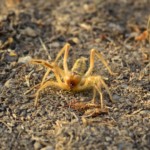
Camel spiders are not actually spiders, but they are arachnids. Even though they don’t have venom, they’re terrifying to look at, especially if you have the intense fear of spiders known as arachnophobia.
The camel spider is also known as the sun spider or wind scorpion; these names come from its appearance and behavior. The camel spider is usually between 2-6 inches long with large pincers that are used for catching prey larger than itself (usually lizards). It eats insects and small lizards such as geckos and skinks when it can find them; if there aren’t any nearby then the camel spider will eat plants instead.
Bot Fly
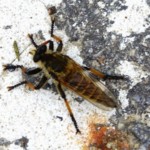
The bot fly is a species of insect that is beelike with rounded heads. Bot flies typically lay eggs on the skin of mammals, including humans. The larvae burrow into your skin once they are hatched. If you’re unlucky enough to get infected by one, you’ll notice them when they hatch and begin to move around under your skin’s surface.
Bot flies can be found in tropical and subtropical climates across the world, though they aren’t common in North America or Europe. They tend to prefer warmer places where there are more insects laying eggs on host animals’ bodies (like monkeys) for them to consume later–but if you live in warmer climates yourself or travel there often, you may want something else besides antibiotics at hand in case one attaches itself onto your body without warning!
Scorpionfly
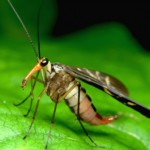
The scorpionfly is a large insect with a long, narrow abdomen and a long, narrow head. It also has two pairs of wings. The female scorpionfly’s ovipositor can be up to six inches long, which helps her lay her eggs in soil or wood. The male scorpionfly does not have this ovipositor and instead uses his abdomen to fertilize the eggs of his mate.
Scorpionflies are most commonly found in forests but may also be found on beaches and meadows as well as in caves where they feed on small insects by sucking them dry through their proboscis (a tube-like mouth structure). Scorpionflies can bite humans if provoked but they are not aggressive towards humans unless disturbed while resting during daylight hours when they resemble sticks due to their brownish coloration that blends into the surrounding vegetation.
Don’t Get Spooked by Insects in Your Home
Even if you’re unlikely to catch a scorpionfly in your house this fall, it’s important to keep your home protected from common household pests year-round to prevent those insect-induced jump scares.
For help finding your perfect annual pest protection plan, call (631/516) 864-6900.

